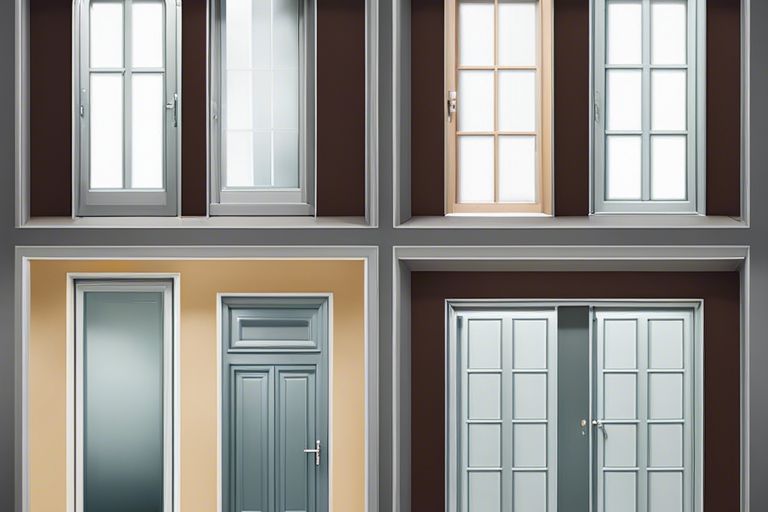When working with curtain walls in Revit, it’s crucial to know the correct way to delete curtain wall grids to avoid errors in your designs. Deleting curtain wall grids incorrectly can lead to issues with the overall structure and appearance of your building model. In this guide, we will walk you through the steps to effectively remove curtain wall grids in Revit. By following these simple yet essential steps, you can ensure that your design remains precise and error-free. Learn the best practices for deleting curtain wall grids and master this aspect of Revit to enhance your architectural projects.
Key Takeaways:
- Use the “Tab” Key: Pressing the “Tab” key will allow you to navigate through the grid lines and select the one you want to delete.
- Disable “Multiple Selection”: Ensure that the “Multiple Selection” option is turned off to prevent accidentally selecting multiple grid lines when trying to delete a specific one.
- Use “Delete” Key: Once you have selected the desired grid line, simply press the “Delete” key on your keyboard to effectively remove it from the curtain wall.

Preparations for Deleting Curtain Wall Grids
Before entering into the process of deleting curtain wall grids in Revit, it is crucial to make proper preparations. By understanding the factors that affect grid deletion and implementing tips for effective grid management, you can ensure a smooth and efficient workflow.
Understanding the Factors That Affect Grid Deletion
When preparing to delete curtain wall grids in Revit, it is essential to consider the interconnected elements within the curtain wall system. Elements such as mullions and panels are directly impacted by grid deletion. Additionally, the grid layout and spacing play a significant role in determining the overall structural integrity of the curtain wall.
- Interconnected elements must be evaluated before deleting grids.
- Consider the impact on mullions and panels when deleting grids.
- Grid layout and spacing are crucial for structural integrity.
- Recognising these factors will help in making informed decisions during the deletion process.
Tips for Effective Grid Management Before Deletion
Prior to deleting curtain wall grids in Revit, it is advisable to review the grid hierarchy and alignment to ensure a systematic approach. Organising grids based on their functional purpose and relevance can facilitate a more streamlined deletion process.
- Review the grid hierarchy and alignment for better management.
- Organise grids based on functional purpose and relevance.
- Perceiving these aspects will lead to a more efficient grid deletion process.
By carefully considering the interconnected elements and grid layout, as well as reviewing and organising grids effectively, you can set the stage for a successful grid deletion process in Revit. Taking these preparatory steps will help you mitigate risks and ensure the integrity of the curtain wall system throughout the deletion procedure.
- Consider interconnected elements and grid layout for a successful deletion process.
- Review and organise grids to maintain the integrity of the curtain wall system.
- Perceiving these components will be critical for an effective grid management strategy before deletion.
Step-by-Step Guide to Deleting Curtain Wall Grids
When working in Revit, deleting curtain wall grids can sometimes pose a challenge. Follow this step-by-step guide to effectively remove unwanted grid lines from your curtain walls.
| Accessing the Right Tools in Revit | How-to Remove Individual Grid Lines from Curtain Walls |
Step 1:To start the process of deleting curtain wall grids in Revit, navigate to the “Modify” tab on the ribbon at the top of the screen. Step 2:Click on the “Grid” tool within the Modify tab to access the grid editing options. |
Step 1:Select the curtain wall panel where the grid line you wish to delete is located. Step 2:Hover your cursor over the grid line you want to delete until it highlights, then click on it to select. |
Deleting curtain wall grid lines in Revit can help streamline your modelling process and improve the visual clarity of your design. By selecting and deleting individual grid lines, you can customise your curtain walls to achieve the desired look and functionality in your project.

Troubleshooting Common Issues
Resolving Problems When Deleting Grids
When trying to delete curtain wall grids in Revit, you may encounter some common issues. If you find that the grids are not deleting as expected, first check if any elements such as curtain panels or mullions are still attached to the grid lines. These elements can prevent the grid from being deleted. Ensure you detach any connected elements before attempting to delete the grid again. If you are still facing issues, try reloading the curtain wall families or restarting the Revit software.
If the problem persists, it could be due to constraints or parameters that are preventing the grid from being deleted. Check if there are any locked constraints or specific parameters set on the grid lines. Unlocking these constraints or adjusting parameters may allow you to successfully delete the unwanted grids.
Tips for Ensuring Grids Are Permanently Deleted
When working on deleting curtain wall grids in Revit, it’s essential to follow some tips to ensure they are permanently removed. Firstly, always make sure that you are in the correct editing mode to make changes to the curtain wall. This will prevent any accidental changes or deletions to other elements in the project.
Another useful tip is to check for any overrides that may be applied to the grids. Overrides can sometimes prevent grids from being deleted. Reviewing the override properties and resetting them to default can help in successfully removing the unwanted grids.
- Check for attached elements before deleting grids
- Ensure you are in the correct editing mode when making changes
- Review and reset any overrides applied to the grids
After following these steps, you should be able to effectively delete curtain wall grids without encountering any issues. By ensuring that all dependencies are resolved and overrides are checked, you can maintain the integrity of your Revit model while making necessary adjustments.

Refining Your Workflow
Best Practices for Efficiently Deleting Grids
When it comes to efficiently deleting curtain wall grids in Revit, there are a few best practices that can streamline your workflow. Firstly, it is important to review the grid layout before deletion to ensure you are not inadvertently removing essential elements. Secondly, utilise the selection sets feature in Revit to quickly choose multiple grids for deletion at once, saving you time and effort.
Another tip for efficiently deleting grids is to use the filtering options in Revit to narrow down the grids you want to delete based on specific criteria. This can help you avoid accidentally deleting grids that should be retained, enhancing the accuracy of your deletion process.
Maintaining Curtain Wall Integrity After Deletion
After deleting curtain wall grids, it is crucial to ensure the integrity of the curtain wall system is preserved. One way to achieve this is by reviewing the overall structure of the curtain wall to check for any disruptions caused by the grid deletions. Additionally, consider realigning mullions and panels to fill any gaps left by the removed grids, maintaining the system’s visual and functional integrity.
It is essential to remember that deleting grids can have a significant impact on the curtain wall’s stability and aesthetics. Taking the time to carefully assess the consequences of each deletion and making the necessary adjustments will help you ensure that your curtain wall system remains structurally sound and visually pleasing.
Conclusion
To effectively delete curtain wall grids in Revit, one must first select the curtain wall panel, navigate to the properties palette, and then locate the ‘Grids’ section where individual grids can be deleted by unchecking the corresponding checkbox. Additionally, using the ‘Tab’ key and ‘Delete’ key can also be helpful for removing unwanted grids efficiently. By following these steps, users can easily manage and customise their curtain wall designs in Revit, ensuring a streamlined and precise architectural workflow.
FAQ
Q: How do I effectively delete curtain wall grids in Revit?
A: To delete curtain wall grids in Revit, first select the curtain wall panel containing the grid you want to delete. Then, go to the ‘Modify’ tab on the ribbon and click on the ‘Grids’ tool. Finally, select the grid you wish to delete and press the ‘Delete’ key on your keyboard.
Q: Can I delete multiple curtain wall grids at once in Revit?
A: Yes, you can delete multiple curtain wall grids at once in Revit. Simply hold down the ‘Ctrl’ key on your keyboard while selecting the grids you want to delete. Then, press the ‘Delete’ key to remove all selected grids simultaneously.
Q: Is it possible to restore deleted curtain wall grids in Revit?
A: Unfortunately, once you delete curtain wall grids in Revit, they cannot be restored. It is recommended to carefully review your grid layout before deleting any grids to avoid accidental removal of important elements.






